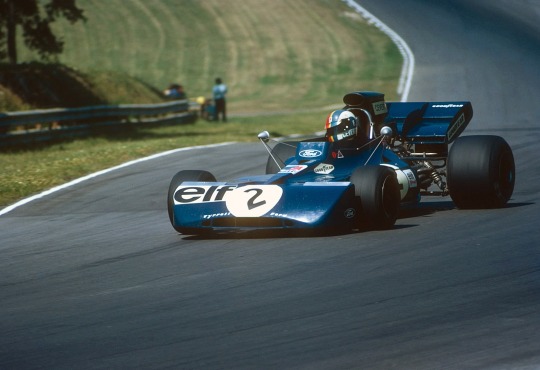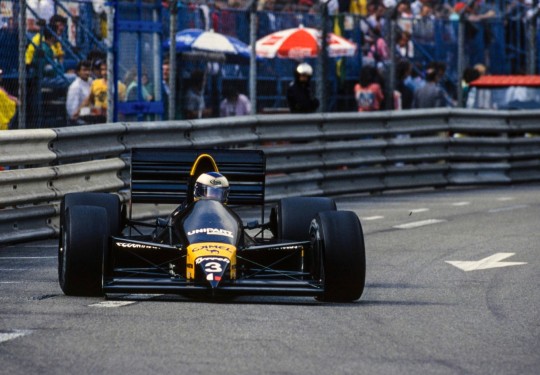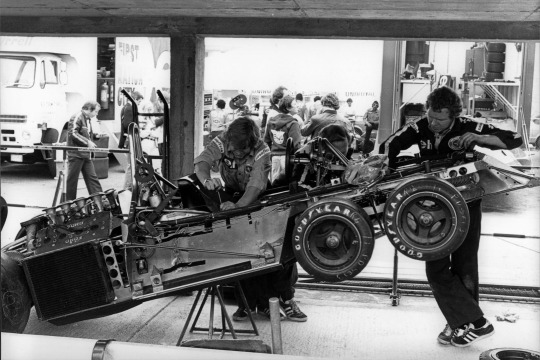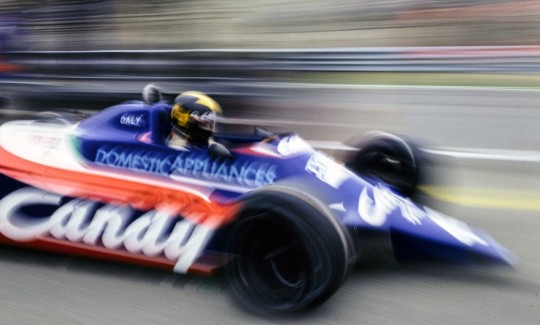#tyrrell ford
Explore tagged Tumblr posts
Text

François Cevert (elf - Tyrrell 002 Ford-Cosworth) Grand Prix de Grande-Bretagne - Brands Hatch 1972. © Bryan Henderson. - source Carros e Pilotos.
45 notes
·
View notes
Text
Blade Runner
#bladerunner#fuori orario#harrison ford#ridleyscott#blade runner#film#80s movies#80s#hi tech#rutger hauer#seanyoung#daryl hannah#philip k. dick#vangelis#roy batty#rick deckard#rachael#pris#joanna cassidy#eldon tyrrell#leon kowalski#j.f.sebastian
169 notes
·
View notes
Text
i see this car in my dreams

1 note
·
View note
Text

Jonathan Palmer Tyrrell - Ford 1988
54 notes
·
View notes
Text

Jackie Stewart 🇬🇧#3 Tyrrell 006 Ford Cosworth.Elf Team Tyrrell.Ab 47ème tour ( frein).Circuit de Montjuic.Grand Prix d’Espagne 🇪🇸1973
10 notes
·
View notes
Text
1977 Superswede Ronnie Peterson 🇸🇪 in his Tyrrell P34 - Ford Cosworth DFV

#vintage car#antique car#automobile#supercar#old car#retrocar#old cars#lemans24h#formula 1#ferrari#Tyrrell P34
47 notes
·
View notes
Text
If You Ain't Cheating, You Ain't Trying...Part Two.
Last time I covered the Penske P2P scandal and the strangely similar Benetton Option 13 from thirty years prior. Today, we're going back another ten years to 1984, and examine how cheating scandals get political: this is the story of the 1984 Tyrrell 012.
The lead shot car.
So, our story begins in 1982, with the likes of Renault and Ferrari (and, with much less success, Toleman) running turbocharged engines. These turbos were marking the end of the age of the British garagistas with their venerable Ford-Cosworth DFV, but a few of the frontrunning Cosworth teams got crafty about it and put up a fight.
Brabham and Williams ran water tanks on their new carbon brakes, ostensibly for cooling, but in reality, the cars were weighed with these water tanks, they dumped them in the race, and then topped off by the time the cars made it to scrutineering by the end of the race. Thus, for most of the actual race, these cars were up to 110 pounds underweight (50 kg).
Just a few years later though, Brabham had switched to BMW, Williams to Honda, and Tyrrell was the last Cosworth team left standing.
The turbocharged engines were getting close to their peak power - over 1000 horsepower with the one-off qualifying units, and still like 800 in the races - so Tyrrell had to get even craftier to stay in contention.
Enter the water-cooled injection system on the Tyrrell 012.
Similarly to the brakes from 1982, this 1984 Tyrrell had a water tank on the engine, ostensibly for cooling purposes, that could be topped off at the last pitstop. Only it seemed like the Tyrrell wasn't just getting filled with water, but with lead shot - 140 pounds of it - and some of that was coming loose as the Tyrrell pulled out of the pits. So, Tyrrell was taking the term "shotgun exhaust" a tad bit literally, it seems.
The real trouble started in Detroit 1984, when Tyrrell's Martin Brundle finished second. That sounds good, except the only problem was...in those days, F1 had much more stringent scrutineering for the podium finishers. And thus, the hammer came down on Tyrrell.
Tyrrell was accused of filling the cars with a mixture of water, lead shot, and benzene.
Thus, Tyrrell was alleged to have, 1: Refueled when refueling was banned in 1984. 2: Used an illegal fuel. 3: Used illegal fuel lines (the cooling lines from the water tank). 4: Had an unsecured ballast (the lead shot).
For these charges, Tyrrell would be disqualified from all rounds, excluded from the championship, and was banned from attending the final three rounds of the season. Furthermore, as they now had no points whatsoever from 1984, they did not qualify for travel subsidies for 1985.
To add insult to injury, FISA fined them for missing the three races they were banned from. Furthermore, as Tyrrell was not an entrant in these races, the other teams - all of which used turbos by 1984 - could unanimously push through regulation changes that benefitted them. Thus, attempts to limit the fuel usage of turbocharged engines were abandoned, 1985 and 1986 would be the years of unrestricted turbos up and down the field.
The writing was on the wall, and by the middle of 1985, Tyrrell would adopt a Renault turbocharged engine.
Thus, was it really about lead shot or illegal fuel or water tanks, or was it about FISA and the turbo teams strongarming the last naturally aspirated team into compliance? I think it was the latter a lot more than the former.
Similarly, the crisis that prompted this whole discussion - the Penske cheating scandal in the 2024 NTT Indycar Series - is that really all about using push-to-pass on restarts at St. Pete? Or is it about the fact that Roger Penske owns the series, owns the dominant Team Penske, and many are dissatisfied with the series' trajectory.
Stagnant regulations, stagnant TV ratings, and stagnant investments. Opportunities to bring Indycar abroad have failed to materialize, Honda is considering leaving and the premier Chevy team - whose engines are made by Ilmor, which Roger Penske also owns! - just got caught cheating. No wonder Zak Brown from McLaren and Michael Andretti from Andretti Global have been his most vocal critics, especially with regards to this scandal.
Michael was calling for Penske to sell the series before all this, now? Well, it's gotten so bad that there was a behind closed doors team owners meeting during this last Indycar race at Barber Motorsports Park.
Forty years ago, a cheating scandal was all the excuse the turbo teams needed to turn against Tyrrell, now, a cheating scandal has only strengthened the battle between Team Penske and the other Indycar teams.
The only difference, I suppose, is that Tyrrell was a minnow, and Penske is the big fish in the pond.
That team meeting at Barber? A day after that, Scott McLaughlin and Will Power crossed the line one-two in a dominant victory for Team Penske.
Tyrrell, meanwhile, were a shell of their former shelves after 1984, and would never win another race.
Next on this miniseries on cheating, we get to the wacky days of old timey NASCAR, particularly the infamous Smokey Yunick.
11 notes
·
View notes
Text
Rain at Monaco
Hers is Jackie Stewart in his Tyrrell-Ford charging up the hill from Sainte Devote toward the Casino during a very wet Monaco Grand Prix on May 14, 1972. In somewhat unusual weather conditions for Monaco both the Saturday practice and the Sunday special practice were wet. The adverse weather continued through the start of the race and there were repeated showers during much of its planned length…
#auto racing photographs#f1 photographs#Ferrari#Jackie Stewart#klemcoll#Lotus#Monaco Grand Prix#motorsports#Tyrrell
2 notes
·
View notes
Text


Patrick Depailler, Prince Rainier of Monaco, Princess Grace of Monaco, Tyrrell-Ford 008, Grand Prix of Monaco, Circuit de Monaco, 07 May 1978.
20 notes
·
View notes
Text

Tyrrell-Ford's six-wheeled P34 is inspected at the 1976 Monaco Grand Prix. Circuit de Monaco, Monaco
Bernard Cahier
5 notes
·
View notes
Text

Jody Scheckter - Tyrrell-Ford Cosworth - vainqueur du Grand Prix de Suède - circuit de Scandinavie 1976. - Magazine Grand Prix Printemps 2021. - source Frenchcurious.
36 notes
·
View notes
Text

105 notes
·
View notes
Text


stefan bellof in the tyrrell 012 ford
10 notes
·
View notes
Text

Derek Daly Tyrrell - Ford 1980
50 notes
·
View notes
Text
Jonathan Palmer: Doctor Driver Deal-maker | F1 Beyond The Grid Podcast
He didn’t come from a racing family. He followed in the footsteps of his father and qualified as a doctor. How Jonathan Palmer ended up driving in Formula 1 is an intriguing tale of passion for racing, intuition and plenty of graft. Palmer initially competed in Formula Ford but after qualifying as a doctor, he decided to focus on racing professionally. He became British Formula 3 champion in 1981 and European Formula 3 champion in 1983. That year, Williams gave him his F1 debut at the European Grand Prix. He would go on to race for RAM, Zakspeed and Tyrrell over the next six years – scoring 14 championship points along the way. Palmer takes Tom Clarkson through his unique journey from studying medicine to competing in Formula 1. He reflects on some memorable drives in Monaco and we hear wonderful insight into what it was like working with Ayrton Senna as a test driver for McLaren in 1990. Palmer, whose son Jolyon also raced in F1 for Renault in 2016 and 2017, became part of the BBC’s Formula 1 coverage after retiring. He recalls working the day Senna lost his life at Imola in May 1994. For more F1® videos, visit https://www.Formula1.com Follow F1®: https://www.instagram.com/F1 https://www.facebook.com/Formula1/ https://www.twitter.com/F1 https://www.twitch.tv/formula1 https://www.tiktok.com/@f1 #F1 #F1BeyondTheGrid via FORMULA 1 https://www.youtube.com/channel/UCB_qr75-ydFVKSF9Dmo6izg
2 notes
·
View notes
